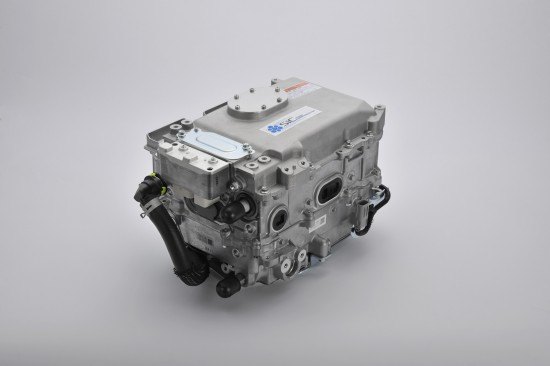Toyota Unveils Silicon Carbide Semiconductor Trial
Toyota unveiled its plans Wednesday to trial a new hybrid system using silicon carbide power semiconductors that could find its way into hybrids and EVs.
The trial will compare the new silicon carbide semiconductors with silicon units currently found in many a hybrid’s, FCV’s and EV’s power control unit, which are linked to a 20 percent loss in overall electric power. The aim is to increase powertrain efficiency by mitigating said losses through the new semiconductors.
The test subjects will be a Camry hybrid prototype and a fuel-cell bus. The bus trial began in early January, when Toyota started data collection on a setup featuring SiC diodes in the FCV’s voltage step-up converter. Meanwhile, the Camry — whose SiC components are in both the hybrid’s voltage step-up and inverter — will hit the road for a year beginning early next month. Both tests are being carried out in Toyota City, Japan.
Toyota hopes to have the SiC technology — developed in a partnership with Denso Corporation and Toyota Central R&D Labs, Inc. — ready for practical use as soon as possible.
Seattle-based writer, blogger, and photographer for many a publication. Born in Louisville. Raised in Kansas. Where I lay my head is home.
More by Cameron Aubernon
Latest Car Reviews
Read moreLatest Product Reviews
Read moreRecent Comments
- MaintenanceCosts Poorly packaged, oddly proportioned small CUV with an unrefined hybrid powertrain and a luxury-market price? Who wouldn't want it?
- MaintenanceCosts Who knows whether it rides or handles acceptably or whether it chews up a set of tires in 5000 miles, but we definitely know it has a "mature stance."Sounds like JUST the kind of previous owner you'd want…
- 28-Cars-Later Nissan will be very fortunate to not be in the Japanese equivalent of Chapter 11 reorganization over the next 36 months, "getting rolling" is a luxury (also, I see what you did there).
- MaintenanceCosts RAM! RAM! RAM! ...... the child in the crosswalk that you can't see over the hood of this factory-lifted beast.
- 3-On-The-Tree Yes all the Older Land Cruiser’s and samurai’s have gone up here as well. I’ve taken both vehicle ps on some pretty rough roads exploring old mine shafts etc. I bought mine right before I deployed back in 08 and got it for $4000 and also bought another that is non running for parts, got a complete engine, drive train. The mice love it unfortunately.






































Comments
Join the conversation
Dr. Hibbert: 'Was it carbon based, or silicone based? Homer: 'The second one, xylophone.'
In an industrial application a "drive" is used to operate a squirrel cage induction motor at different speeds. The same motor connected to normal 60Hz AC power will run at a speed determined by the number of poles the motor was built with. 7200 / number of poles = motor rpm. Most motors are 3600, 1800 and 1200, slower motors with more poles are generally less common. An AC variable frequency drive takes the incoming 60Hz AC power and rectifies and filters it using a capacitor bank, to a single phase DC bus. Transistors are used to reconvert this dC power to AC of any desired frequency. You observe a voltage to frequency ratio when driving the motor so the operational rpm range of the motor is limited. This is exactly what's being done in a Tesla, except they start with DC from a battery. Those power transistors, sometimes called IGBT's or insulated gate bipolar transistors, rapidly switch the power to synthesize a pure sine wave at a frequency to achieve the desire motor rpm. Every step in his conversion has losses, just as the transistors have a voltage drop across their junctions and dissipate this power as heat. So big heat sink and whatever cleaver means to keep he electronics cool. Medium voltage drives have huge losses, the air conditioner is as large as the drive itself in most cases. This is what I do for a living.